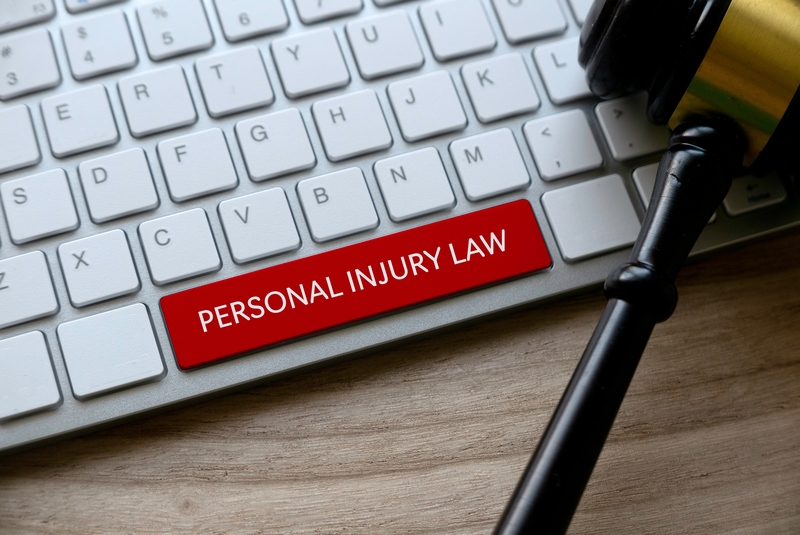Evaluating a Personal Injury Case: What Factors Matter Most?
Navigating the aftermath of a personal injury can be a daunting task. Not only are you dealing with physical pain and emotional distress, but the complexities of the legal world can also add an extra layer of stress to an already challenging situation. Understanding the key factors that contribute to the evaluation of a personal injury case can equip you with the knowledge to navigate this process with confidence.
Over the course of this article, we will delve into the considerations that play a critical role in the assessment of a personal injury case. We'll discuss how liability is determined, the importance of damages, and the role that the statute of limitations plays. Moreover, we'll shed light on the impact of pre-existing conditions and the potential role of contributory negligence. Our goal is to help you understand these factors, so you can better anticipate how they might affect the outcome of your case.

Armed with this knowledge, you'll be in a stronger position to navigate the complexities of a personal injury case, whether you're consulting with an attorney, dealing with insurance companies, or preparing for litigation.
How Liability is Determined
Determining liability in personal injury cases often rests on the principle of negligence. The basic rule is that if one person involved in an incident was less careful than another, the less careful party must pay for at least a portion of the damages suffered by the more careful one.
There are several key factors that come into play when assessing liability. For instance, if the injured person was trespassing or should have expected the kind of activity which caused the accident (assumption of the risk), the person who caused the accident might not be liable as they had no legal "duty" to be careful toward the injured person. If the injured party was also careless, in most states their compensation will be reduced by the percentage of their own fault for the accident, a concept known as comparative negligence.
Employers can also be held liable for accidents caused by their employees while on duty, under the principle of "respondeat superior". If an accident happens on a property that is dangerous because it's poorly maintained, the owner can be held responsible for their negligence in maintaining the property. Similarly, both the manufacturer and seller of a product can be legally liable for injuries caused by a defective product.
The Importance of Damages
In personal injury cases, determining and proving damages is a critical aspect. The term 'damages' refers to the monetary compensation that may be awarded to a person who has been injured or harmed due to the negligence or unlawful conduct of another. These damages are meant to return the injured party to the position they were in prior to the injury or harm.
There are several types of damages that can be claimed in a personal injury case. These include:
- Medical expenses: Compensation for the cost of medical care associated with the injury. This can include both past and future medical expenses.
- Lost wages: Compensation for income lost due to the injury, as well as potential future income if the injury results in a long-term disability.
- Pain and suffering: This can include both physical pain and emotional distress. These types of damages are often difficult to quantify and may be calculated based on the severity of the injury and its impact on the individual's life.
In most states, the damages awarded to an injured party will be reduced by the percentage of their own fault for the accident. This principle, known as comparative negligence, ensures that damages are allocated proportionally based on each party's degree of fault. It's also important to note that the rules for awarding damages and the types of damages that can be claimed vary by jurisdiction.
Why The Statute of Limitations Matters
The statute of limitations is a critical element in personal injury cases, serving as a legal deadline for filing a lawsuit. In Florida, this typically means that an injured party has two years from the date of the injury to initiate legal proceedings. This time frame is significant as it provides a finite window during which a person can seek compensation for damages incurred due to the injury.
Failure to adhere to the statute of limitations can have severe repercussions. Should a case not be filed within the designated time frame, the right to sue and recover compensation for injuries may be lost. In fact, courts have the power to dismiss cases that fail to meet these deadlines, a point underscored by the Florida Supreme Court's decision in the case of Flatt v. Kantak. In this particular case, the lawsuit was dismissed because it was not filed within the four-year statute of limitations.
It's important to note, however, that this is a generalized overview and exceptions may apply depending on the specifics of the case. As always, consulting with a legal professional is advised to understand the nuances of your unique situation.
Pre-Existing Conditions
In the realm of personal injury law, pre-existing conditions can significantly influence the outcome of a case. A pre-existing condition is an illness, injury, or medical condition that an individual had prior to the accident or injury in question. While they do not disqualify someone from filing a personal injury claim or receiving compensation, they do add a layer of complexity to the proceedings.
One significant challenge posed by pre-existing conditions is the "eggshell plaintiff" rule, a legal principle that acknowledges a defendant must "take their victims as they find them." In other words, if a plaintiff has a pre-existing condition that made them more susceptible to injury, the defendant is still typically held responsible for the full extent of the injuries resulting from the accident, even if those injuries are more severe than what an average person might have suffered in the same situation.
However, on the other side of the coin, insurance companies and defense attorneys may attempt to minimize the amount of compensation by attributing the injuries or the severity of the injuries to the pre-existing condition rather than the accident. This is where detailed medical records and expert testimony become essential in distinguishing the impact of the accident from the underlying condition. A qualified personal injury attorney can help navigate these complexities to ensure a fair assessment of damages.
The Potential Role of Contributory Negligence
Contributory negligence is a legal concept that can significantly impact a personal injury case. It refers to the idea that if an injured party (the plaintiff) is found to have contributed to their own injury or accident, it may limit or even negate their ability to recover damages from the other party (the defendant). In some jurisdictions, even a small degree of fault on the part of the plaintiff can completely bar recovery.
The role of contributory negligence in a personal injury case underscores the importance of thorough legal representation. A skilled attorney can help argue against claims of contributory negligence, potentially increasing the amount of compensation that a plaintiff can recover. It's critical to consult with a legal professional to understand how these rules apply to your unique situation.
Daytona Beach Personal Injury Attorney
Several key factors play significant roles in evaluating a personal injury case. From determining liability, assessing damages, taking into account the statute of limitations, considering pre-existing conditions, and understanding the potential impact of contributory negligence, each element can profoundly influence the outcome of a case.
Navigating the intricacies of personal injury law can seem overwhelming, but you don't have to do it alone. The trained attorneys at Vasilaros Wagner are here to help you through this process. With their expertise, they can meticulously evaluate your case, providing clarity on these complex issues and guiding you towards your maximum possible settlement. Remember, the goal is not just to win a case, but to ensure that you receive the compensation you deserve, enabling you to focus on your recovery and rebuilding your life. If you or a loved one has been injured due to the negligence of others, please don't hesitate to reach out to the Vasilaros Wagner team. Your journey to justice and recovery can start today.

- $250 Million in Settlements and Verdicts
- Largest Jury Verdict In Volusia County History
- No Cost Unless We Win
- Top Rated Avvo + Google Reviews
- Provide Our Lawyer Guarantee
- 24/7 Personal Injury Support
- Call (833) 333-3333






